At least 13 dead, over 4m affected as Punjab reels from severe floods
417 relief camps, 498 medical camps, 431 veterinary camps set up in affected districts
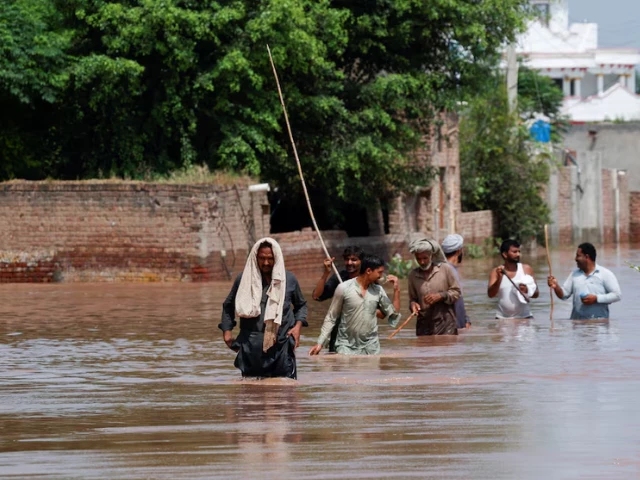
At least 13 people, including five children, died as floods devastated Jalalpur Pirwala, where more than 50 villages have been badly affected by the Chenab and Sutlej rivers.
Shops and houses collapsed, thousands of acres of crops were destroyed, and rescue teams struggled to reach stranded populations, authorities said.
Relief Commissioner Punjab Nabeel Javed said that due to severe flooding in the Ravi, Sutlej, and Chenab rivers, more than 4,300 villages have been affected.
He said that a total of 4.201 million people have been impacted by the flooding in the rivers. Of these, 2.163 million stranded people have been shifted to safe locations.
In the severely flood-hit districts, 417 relief camps have been established. In addition, 498 medical camps have been set up in the affected districts.
To provide healthcare for livestock, 431 veterinary camps have also been established.
So far, 1.579 million animals have been moved to safe places during rescue and relief operations in the affected districts.
The Relief Commissioner further stated that Mangla Dam is 89 per cent full, while Tarbela Dam has reached 100 percent capacity. On the Sutlej River, India’s Bhakra Dam is 90 per cent full, Pong Dam is 99 per cent full, and Thein Dam is 97 per cent full.
Relief Commissioner Punjab Nabeel Javed said that, on the orders of the Punjab Chief Minister, compensation will be provided to citizens for their losses.
At least 863 people have died and 1,147 others injured as widespread floods ravage Pakistan, damaging 9,166 homes, 672 kilometers of roads, and 239 bridges, according to a preliminary report by the Planning Commission. The deluge has also killed 6,200 livestock nationwide. The commission said it will release a final assessment of economic losses within two weeks.
The provincial breakdown shows Punjab with 216 deaths, 232 homes damaged, and 121 livestock lost. Khyber Pakhtunkhwa reported 484 fatalities, 4,666 homes damaged, and 5,460 livestock killed. Balochistan saw 26 deaths and 781 homes affected, while Gilgit-Baltistan recorded 87 fatalities, 1,253 homes damaged, and 67 livestock lost. In KPK, 30 people died and 2,078 homes were destroyed, while Islamabad reported 8 deaths and damage to 65 houses.
PM reviews damage
The Prime Minister, Shehbaz Sharif formed a high-level committee to assess the impact of recent floods on agricultural production and food security. The committee will be chaired by the Federal Minister for National Food Security.
The committee includes the Federal Minister for Planning and Development, the Secretary of Finance, and the Chief Secretaries of all four provinces, Gilgit-Baltistan, and Azad Jammu & Kashmir. In addition, the Agriculture Secretaries of Punjab and Sindh, the DG of PARC, the DG of the Land Information Management System, and Ahmed Umair will be part of the committee.
The committee will estimate losses in major crops such as sugarcane, cotton, rice, maize, and vegetables. The report will also include an analysis of price trends for agricultural commodities and vegetables over the past eight months.
Availability and price estimates for vegetables imported from Iran, the UAE, and Afghanistan will also be presented. Furthermore, a comprehensive analysis of losses to livestock and fodder, reductions in exports, and damage to infrastructure will be included.
The committee will also provide PM with recommendations for short-term measures and strategic actions.
Rivers updates
Provincial Disaster Management Authority (PDMA) reported that flood conditions persist in rivers across Punjab due to heavy rainfall in the upper catchment areas.
“At Ganda Singh Wala, the Sutlej River is in very high flood with an inflow of 261,000 cusecs,” PDMA Director General Irfan Ali Kathia said. The Sutlej was also in high flood at Sulemanki with 137,000 cusecs.
Flows in the Chenab River were recorded at 69,000 cusecs at Marala, 108,000 cusecs at Khanki Headworks, 120,000 cusecs at Qadirabad, 416,000 cusecs at Trimmu Headworks, and 452,000 cusecs at Panjnad, where the river was in very high flood.
In Multan, authorities warned that water levels in the Chenab River may rise further at any time, urging residents to move to safer locations.
Discharge of 543,000 cusecs from Head Trimmu entered the district, pushing water levels above the irrigation department’s gauge of 413.40 feet at Head Muhammad Wala.
To reduce pressure, officials said the Shershah embankment would be breached using explosives, potentially affecting more than 20 villages.
MNAs Abdul Qadir Gillani and Ali Qasim Gillani appealed to residents to vacate their homes. Overnight evacuations were carried out near Shershah.
The Ravi River recorded 28,000 cusecs at Jassar, 59,000 cusecs at Shahdara (medium flood), 104,000 cusecs at Balloki Headworks (very high flood), and 135,000 cusecs at Sidhnai Headworks (high flood).
The PDMA further warned that the Sutlej River’s flow is also expected to increase. The authority said the Indian High Commission had shared flood data with Pakistan, reporting high-level flooding downstream of Harike and Ferozepur in India.
DG PDMA said the civil administration, Pakistan Army, and other departments remained on alert, stressing: “The protection of citizens’ lives and property must be ensured.”
DG PDMA said all departments were on alert under the directives of the Punjab Chief Minister. “All available resources are being utilized to protect the lives and property of citizens,” he said.
Railways at risk
Railway officials said breaching at Shershah could disrupt the Multan–Rawalpindi track, suspending three services: the Mehr Express, Thal Express, and a shuttle to Dera Ghazi Khan.
The Mehr Express and Thal Express operate via Shershah Chenab Bridge, Muzaffargarh, Kundian, and Mianwali towards Rawalpindi, while the Dera Ghazi Khan shuttle passes through Shershah, Muzaffargarh, Kot Addu, and Taunsa Barrage.
If waters reach the Shershah crossing, the Multan–Karachi main line may also be affected. However, operations on the Multan–Karachi route will continue if the main line remains safe.
On Monday morning, the Thal Express departed at 6:30 am for Rawalpindi via the Shershah Chenab Bridge, while the Dera Ghazi Khan shuttle left at 5:30 am. If breaching occurs before 4:15 pm, railway officials said the Mehr Express service to Rawalpindi would be suspended.
City updates
The Chenab remained in high flood in Muzaffargarh, where authorities also prepared to breach near Shershah. Traffic police closed the Multan–Muzaffargarh road and the route to Head Muhammad Wala, cutting road connectivity between Muzaffargarh and Multan.
Passengers were directed to reroute via Head Panjnad and Bahawalpur. Police said the gauge reading at Shershah Bridge was 394 feet against a high mark of 395 feet.
In Vehari, water levels in the Sutlej slightly receded but remained at medium flood at Head Islam, with inflows and outflows at 118,000 cusecs. Downstream flows at Mian Hakim and Mero Baloch exceeded 140,000 cusecs.
More than 185 villages were affected, and crops on 61,000 acres, including sesame, cotton, rice, and sugarcane — were destroyed. At least 80,000 people were evacuated, while 58,000 livestock were moved to safer areas. The deputy commissioner and DPO visited affected areas overnight to review the situation.
Bahawalpur
In Bahawalpur’s Jhangeewala area, floodwaters broke through an embankment in Panoohar village overnight, submerging homes and crops. Residents said they were forced to evacuate without assistance, while livestock was left without fodder. Large-scale displacement is ongoing.
In Uch Sharif, dozens of villages were submerged as houses collapsed and settlements went under water. Areas affected included Bet Ahmed, Bukhtiyari, Kachi Lal, and Rasoolpur.
Residents reported severe difficulties in evacuating, with many families still trapped in homes. “Our houses have collapsed, and we are surrounded by water. Please rescue us,” locals pleaded. Families said they could not evacuate with children due to high floodwaters, while food shortages worsened the crisis.
Clean water
More than 100,000 bottles of 19 liters each have been delivered to flood-affected districts as the supply of clean drinking water expands, the Housing Department said, adding that the effort is being carried out through the Punjab Saaf Pani Authority.
So far, 727,000 liters of water have been distributed across flood-hit areas, benefiting 242,333 people. On Sunday alone, 187,500 liters were provided. The authority is also distributing ultrafiltration hand pumps to affected communities.
“All relevant institutions are working together to ensure citizens’ safety, and providing safe drinking water to flood victims remains our top priority,” a Housing Department spokesperson said, adding that emergency measures were being taken to ease the difficulties of those affected.
Police evacuations and rescue efforts
Punjab Police continued rescue and relief operations in flood-hit districts. Inspector General Dr Usman Anwar said the force was ensuring the evacuation and protection of both citizens and livestock.
More than 16,000 officers and personnel, 747 vehicles, and 40 boats are involved in the operations. According to a police spokesperson, over 500,000 people have been evacuated so far, including 215,798 men, over 152,000 women, and 132,978 children.
Additionally, 584,474 livestock have been moved to safer areas. The breakdown of evacuations includes 159,930 people in the Multan region, 71,343 in Faisalabad, 62,355 in Dera Ghazi Khan, and 54,775 in Sahiwal.
IG Punjab urged citizens to cooperate with police during evacuations “to protect precious human lives.”
Minister reviews arrangements
Provincial Minister for Communication and Works Malik Sohaib Ahmed Bharth chaired a meeting to review flood arrangements, including relief camps, alternative routes, installation of signboards, and machinery availability.
He said protective embankments in Bahawalpur and Rahim Yar Khan were intact, while Head Sulemanki Road and Noor Pur embankment remained safe. Teams are working around the clock in the field, and heavy machinery has been deployed in Dera Ghazi Khan.
The minister directed that flood-affected roads be repaired immediately once water levels recede.





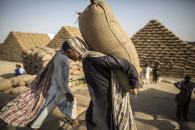
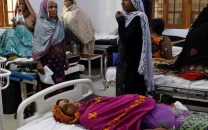




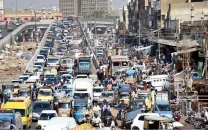



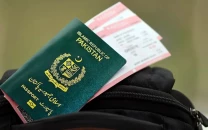






COMMENTS
Comments are moderated and generally will be posted if they are on-topic and not abusive.
For more information, please see our Comments FAQ